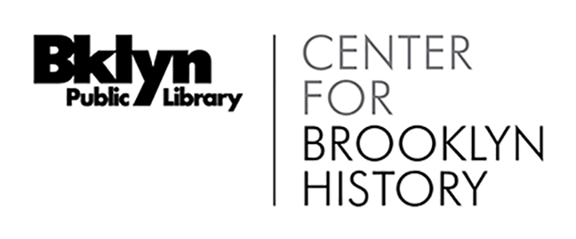Lillian Cooper papers
Call Number
Dates
Creator
Extent
Language of Materials
Abstract
The Lillian Cooper papers consist of correspondence, journals, writings, licenses and certificates, and photographs of Lillian Cooper, a socialist writer and teacher from Brooklyn.
Biographical Note
Lillian Cooper was born on December 11, 1907 at the Jewish Hospital on Classon and St. Marks Avenues in Brooklyn, New York. Her parents, Ben Cooper and Celia Cooper (née Belzman), had recently immigrated from the Pale of Settlement (listed as Russia in censuses) and Lillian was their first child. Ben Cooper's occupation listed on Lillian's birth certificate was bookbinder.
The family moved several times in Brooklyn. At the time of Lillian's birth, the Coopers were living at 17 Barrett Street in Brownsville. Then they moved to an address on Lorimer Street. Ben and Celia Cooper had two more children: Gertrude (1910-1972) and George (1912-1963). In 1918, they were living at 609 Gates Avenue. In 1930, Lillian Cooper was still living with her parents at 570 Gates Avenue in Bedford-Stuyvesant. The Coopers finally settled in Brighton Beach at 3130 Brighton 6th Street.
Cooper graduated from Eastern District High School in 1925. She received a New York State scholarship to complete her BA degree at Hunter College, graduating in 1930. She also completed some graduate coursework at Columbia University in the late 1930s/early 1940s. Cooper was certified as an elementary school teacher. She got a job at Greenup High School in Greenup, Kentucky where she lived and worked until 1933 when she then moved to work temporary jobs in Philadelphia and Arkansas.
In the mid-1930s, Cooper met Herman Kobbé, an architect and candidate for New York Lieutenant Governor on the 1934 Socialist Party ticket. Cooper worked as a social investigator in the Department of Welfare for the City of New York from 1935 to 1942.
Kobbé and Cooper lived together in an apartment at 209 Washington Park in Brooklyn. Lillian Cooper and Herman Kobbé traveled to Mexico together and lived there for a time. In 1943, they bought a farm, nicknamed Chinaberry House, in Leesville, South Carolina.
In the late 1940s, Cooper and Kobbé worked together on the Holly Point Project, a plan for a children's development center on their land around Lake Murray, South Carolina. The plan included a boarding school, programs for parents, and vacation opportunities for city children. Kobbé was the director and Cooper worked as research assistant. Cooper and Kobbé's relationship ended around 1948.
In the mid-1950s, Cooper worked in the College of Engineering at the University of Florida, Gainesville. When she moved back to New York, Cooper continued teaching in New York City public schools and took courses in writing at New York University and the Herzl Institute. She submitted fiction pieces and poems to publications, often using the pen name Joan Kinner. She also took on freelance, research, editing, and writing projects.
Lillian Cooper died on September 19, 1995 in New Jersey.
Arrangement
This collection is organized into five series:
Series 1: Correspondence, 1922-1977
Series 2: Writings, 1933-1983
Series 3: Administrative files, 1935-circa 1980
Series 4: Herman Kobbé papers, 1935-1947
Series 5: Photographs, circa 1905-circa 2000
Scope and Contents
The Lillian Cooper papers consist of correspondence, journals, photographs, certificates and diplomas, and ephemera relating to the life of writer and teacher Lillian Cooper. The bulk of the collection is made up of correspondence between Cooper and her family, friends, and colleagues. The rest of the collection is published and unpublished writings in journals and notebooks, and files related to her relationship with Herman Kobbé and their Holly Point Project. Her papers include photographs of her immediate and extended family.
Subjects
Genres
People
Donors
Conditions Governing Access
Open to users without restriction.
Conditions Governing Use
While many items at the Center for Brooklyn History are unrestricted, we do not own reproduction rights to all materials. Be aware of the several kinds of rights that might apply: copyright, licensing and trademarks. The researcher assumes all responsibility for copyright questions.
Preferred Citation
Identification of item, date (if known); Lillian Cooper papers, CBHM.0023, Box and Folder number; Brooklyn Public Library, Center for Brooklyn History.
Immediate Source of Acquisition
Gift of Gemma Cooper-Novack, 2023.
About this Guide
Processing Information
All letters in envelopes were removed from their envelopes and flattened. News clippings were photocopied onto archival paper and originals discarded. Folder titles in brackets were provided by the archivist.
Some items in box 23 have been treated for mold spores. Masks are recommended while handling.
